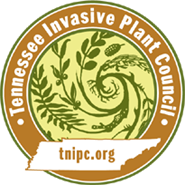Maclura pomifera (Raf.) Schneid.
Bodock (Bois-d'arc), Hedge Apple, Horse Apple, Osage Orange| Category |
|---|
| Tree |

Description
Height
Trees grow up to 50 feet (15.24 m) with a short trunk.Bark
The trunk is brown with orange within the furrows. The roots are a brilliant orange.Twigs
Twigs zigzag and usually bear stiff thorns about ½ inch (1.3 cm) long.Leaves
The long, glossy, long-pointed leaves are 3-4 inches (7.6-10.2 cm) long.Flowers
Flowers are minute. The staminate flowers are in a raceme while the pistillate ones are in spherical heads. Multiple fruits are 4-5 inches (10.2-12.7 cm) in diameter.Fruit/Seeds
The fruit is a large, dense, green, wrinkled ball as large as 6 inches (15.2 cm) in diameter. Seeds are smaller then those of sunflower and may number over 200. Female trees bear the fruit.Images
Photo: Paul Wray, Iowa State University, Bugwood.orgMore images of Maclura pomifera
Life History
Osage Orange is a round-topped tree native to the eastern Texas area but naturalized widely from plantings in previous centuries. Pleistocene mammals such as the mastodon and horse may have helped with seed distribution. Often found along fence rows acting as livestock barriers. It is a member of the Moraceae, or Mulberry Family. Easily propagated from seed.Habitat
Osage Orange typically occurs in open, sunny areas and can live in a variety of soils. It is often found in old pastures.Origin and Distribution
It is native to eastern Texas, southeastern Oklahoma, southwestern Arkansas, and the extreme northwest corner of Louisiana.Other states where invasive: WA, NV, AZ, KS, MO, LA, GA, IL, NC, OH, WV, MD.
Management Recommendations
Mechanical Controls
Cutting: Cutting during the summer months with repeat cutting if necessary is best. Cutting is most feasible with smaller plants. Cut the trunk about knee height with a chainsaw, axe, or handsaw. Burning works well in conjunction with cutting.Girdling: Girdling will kill the trees although the bark is thick on older trees. Check the girdles every few weeks to make sure bark has not grown back.
